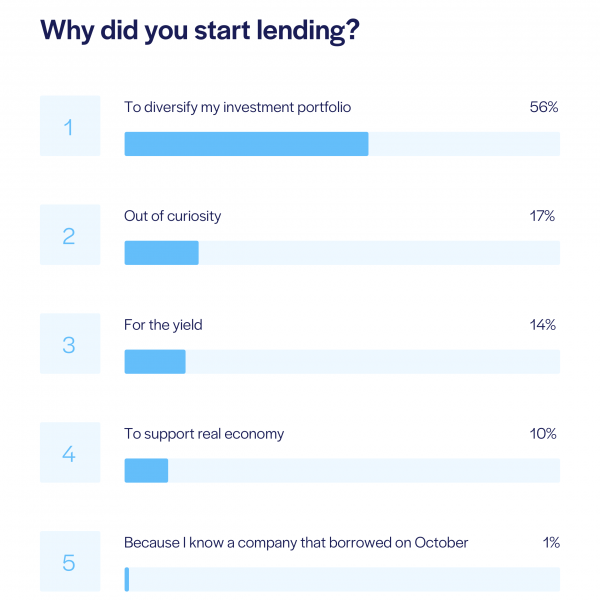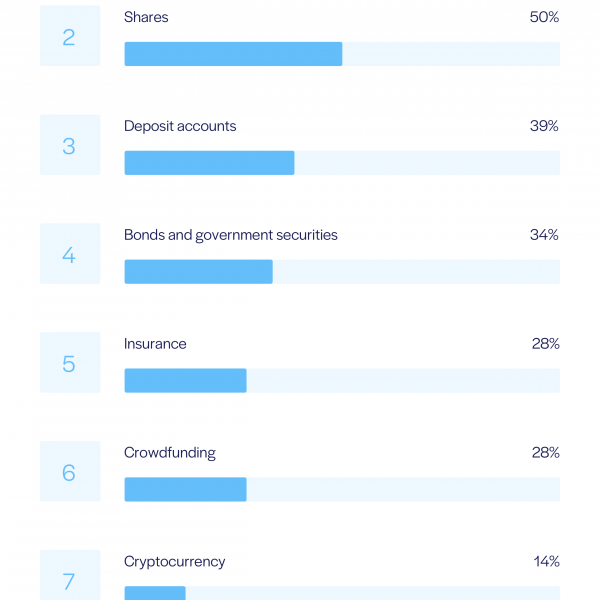From its inception in May 2017 until today, October Italy has financed 108 projects for a total amount of almost 59 millions euros. In this blog we look at the typical Italian lender. We outlined a profile. We built on a sample of 3,200 individuals who turned to October to invest their money and support real economy.
“The success of digital lending platforms such as October lies in their ability to directly connect credit supply and demand. At European level, 19,000 lenders are currently active on our platform (+20% compared to the end of 2018). The constant improvement of the customer experience, combined with the ability to attract quality borrowers, is a key element for the growth of this new asset class”. – Sergio Zocchi, CEO October Italy.
The typical lender: male, aged 36 to 45 and living in Lombardy
Men account for almost 90% of Italian October lenders. They are mainly concentrated in the 36 to 45 age group (35%). The age groups 26-35 and 46-55 weigh 25% each. For any new Italian lender, the chance is twice as high that he is between 18 and 34 years of age than over 55. This is not surprising. A generation that became of age during the financial crisis is generally distrustful towards the banks. A 2017 research by Scratch (Viacom’s consulting firm that interviewed more than ten thousand millennials in the United States) concluded that this generation believes in the future they will no longer need banks. According to them, innovative financial services offered by tech companies such as Amazon, Google, Apple or Paypal will prevail.
About half of October Italian lenders are staff. The others are mainly managers or freelancers. On average, one in two lenders has children. 44% declare an annual net income of up to € 28,000 while 35% are in the range between €28,000 and €55,000. Finally, 20% declare a net income of over €55,000.

He has a well diversified portfolio
The majority of investors in equity crowdfunding invest in one single campaign, as evidenced by the 4th Italian Report on Crowdinvesting published by the Polytechnic of Milan. This is very different on October. The October lender lends on average to more than 50 projects, with an average loan of €90. The average portfolio is €5,000.
Italian lenders invest 30% more on A-rated projects, accepting lower returns on a lower risk profile. They understand that portfolio diversification is the most effective strategy for minimizing the risk of capital loss, thus reducing the impact of defaults on the overall rate of return. The main factors they use to diversify are the project rating, the interest rate, the loan maturity and the company’s business sector. In addition, geographical diversification allows them to reduce the dependence on the domestic economy. Italian lenders lend not only to Italian companies but also to French, Spanish and Dutch companies.
While Lombardy is the region with the highest concentration of lenders, Veneto and Lazio have the highest average portfolio. Piedmont, on the other hand, is the region with the highest number of projects financed. The record belongs to V., 43, a Piedmontese lender whose portfolio includes 349 projects.

The Italian lender is curious, he trusts new technologies and wants to diversify his investments
60% of Italian lenders have known October through forums and websites, while for 20% the word of mouth of friends and family has been decisive. In a context of low or even negative interest rates, investing in bonds and government securities is not attractive to those seeking a return on their savings. 68% of October lenders say they have invested their savings in mutual funds and ETFs, 51% have a stock package and 40% have a deposit account. 30% explored alternative ways to invest their money other than October.

Therefore, it is not only the search for return that is the main reason why Italian lenders turn to October, but also the need to diversify their investments portfolio and support the real economy. These main reasons are followed by curiosity about an emerging asset class such as P2P lending which, according to a study commissioned by Connection Capital, is attracting the attention of High Net Worth Individuals (HNWI). 25% of people with personal assets of at least €1 million invest one-fifth of their resources in alternative financial instruments, thus adopting investment strategies that, unlike traditional bond and equity management, are unrelated to market trends.